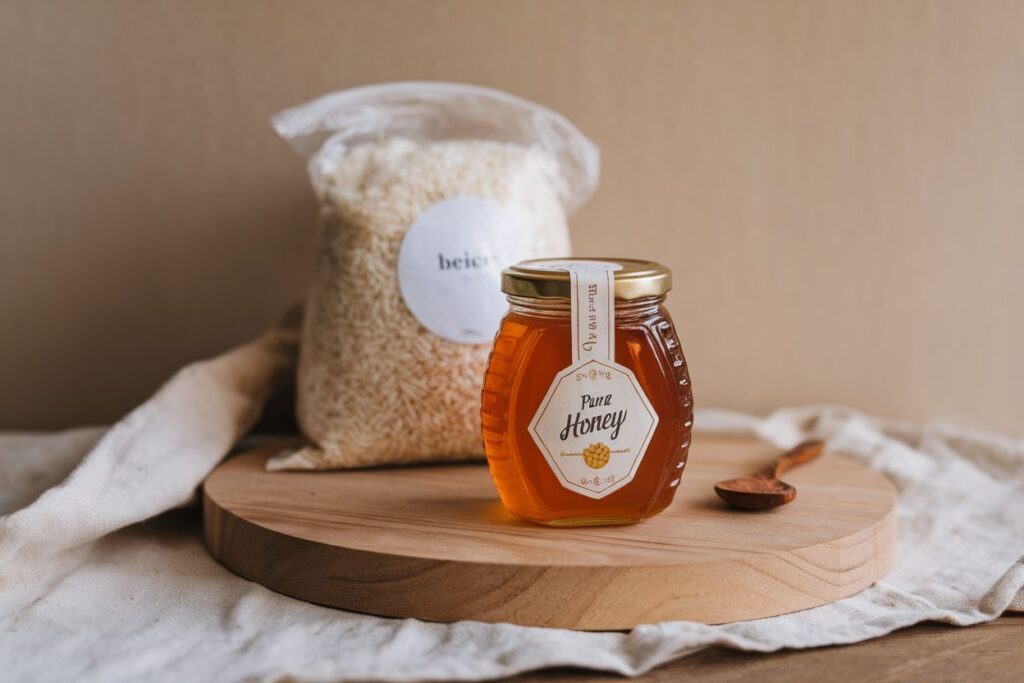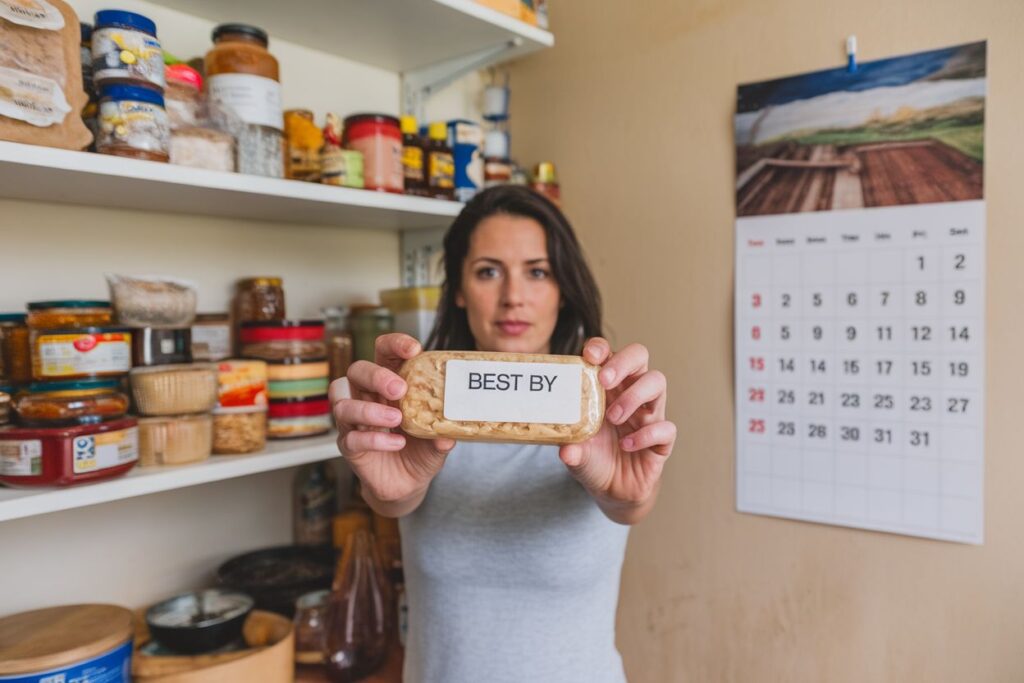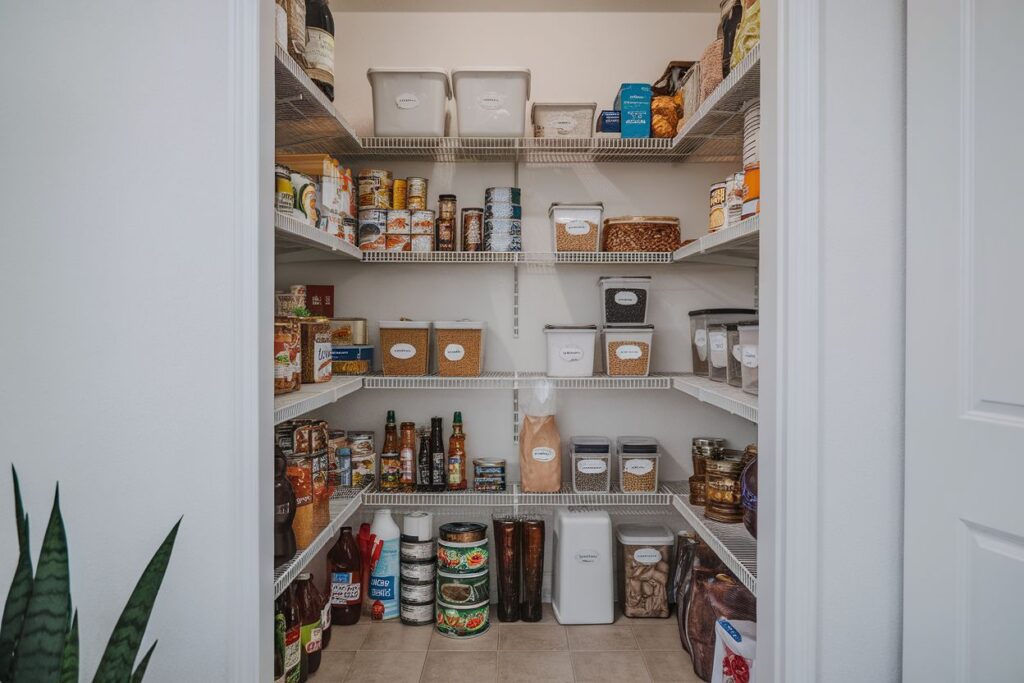We all want things to be easy and quick in today’s world. That’s why non-perishable foods, shelf-stable foods, and long-lasting pantry items are so important. They’re great for emergencies, stocking up, or just keeping food fresh longer. Let’s look at how food lasts longer and what foods you can count on that don’t expire.
We’ll also share tips on how to store food so it stays good longer. This way, you can enjoy your favorite foods for a longer time.
Understanding Food Preservation and Shelf Life Basics
Ever wondered why some foods last forever, while others spoil quickly? The science behind food expiration is fascinating. It helps us keep our favorite foods fresh for longer. We’ll explore how to extend the shelf life of your food.
Food spoilage mainly comes from bacteria, fungi, and other microorganisms. These microbes break down food, changing its taste, texture, and look. Temperature, oxygen levels, and moisture content in food affect how fast it spoils.
Many things affect how long food lasts. Light, humidity, and packaging are important. Knowing these factors helps us use effective preservation techniques.
There are many ways to preserve food, from canning and dehydration to freezing and vacuum sealing. Each method has its own benefits and drawbacks. Choosing the right method depends on the food, desired outcome, and resources available.
Essential Pantry Items with Indefinite Shelf Life

Building a well-stocked pantry means having items that last a long time. Pure honey, salt, and white rice are great examples. They keep their quality and taste for years.
Pure honey is amazing because it never goes bad. It has low moisture, is acidic, and fights off bacteria. Honey found in ancient Egyptian tombs is still good today.
Just keep honey in a sealed container, away from moisture. It will stay fresh forever, keeping its taste and health benefits.
Salt is another item that lasts forever. It stops bacteria and germs from growing. Table salt, sea salt, or Himalayan salt all work well.
Keep salt in a sealed container to keep it fresh. It stays good for decades, making it a must-have in your kitchen.
White rice is also a long-lasting pantry item. It’s been processed to remove parts that spoil easily. This makes it last longer than brown rice.
Store white rice in a sealed container in a cool, dry place. It can stay fresh for years, making it a reliable choice.
Canned foods like meats, veggies, and fruits can last for years. They need to be kept cool and dark. Dehydrated foods like powdered milk, eggs, and freeze-dried fruits and veggies also last a long time. They need careful storage.
Knowing how to store these foods can help you have a strong pantry. It’s ready for any unexpected times. Using non-perishable food list and learning long-term food storage makes you feel safe and self-sufficient.
Understanding Food Labels and Expiration Dates

Understanding food labels and expiration dates can be tough. But it’s key for keeping food safe and fresh. Labels like “best by” and “use by” tell us when food is at its best. They help us know when to use our food to stay healthy and keep our pantries organized.
The “best by” date tells us when a product is at its best taste and quality. After this date, the food might not taste as fresh. But it’s still safe to eat.
The “use by” date is when the food should be used for safety. Eating food after this date can be risky. So, it’s important to watch these labels closely.
In the U.S., food dating isn’t required by the federal government, except for some baby foods. But, many states have their own rules. Knowing these laws helps us handle food right.
Storing food right can make it last longer than the date says. If food looks, smells, and tastes good, it’s probably okay to eat, even if it’s past the date.
Proper Storage Techniques for Extended Shelf Life

Keeping your food fresh and lasting longer is key to reducing waste. The secret to food storage methods is controlling temperature and stopping moisture. With smart pantry organization, you can make your food last longer and keep your kitchen full.
It’s vital to control the temperature of your food. Store your pantry or cupboards in a cool, dry spot, away from sunlight. This slows down food from going bad. For items like oils and spices that get ruined by heat, keep them cold in the fridge or a dark place.
Stopping moisture is also critical for keeping food fresh. Too much moisture can cause mold and spoilage. Use airtight containers, resealable bags, or desiccant packets to keep moisture out. Always check your pantry organization for moisture and fix it to keep your food good.
“Proper storage techniques can mean the difference between wasting food and enjoying it long after its purchase.”
By using these easy food storage methods and keeping your pantry tidy, you can make your food last longer. Focus on temperature control and moisture prevention to enjoy your kitchen staples for more time.
Final Thoughts
We’ve looked into foods that last forever, like honey and salt. These foods show us how to be ready for anything. They also help us live in a way that’s good for the planet.
Learning about food preservation helps us store food better. This knowledge is key for being prepared and living sustainably. It’s a smart move for our planet and our future.
Let’s use these foods that never expire to our advantage. They offer us food, comfort, and a sense of security. By keeping them on hand, we’re ready for anything life throws our way.











